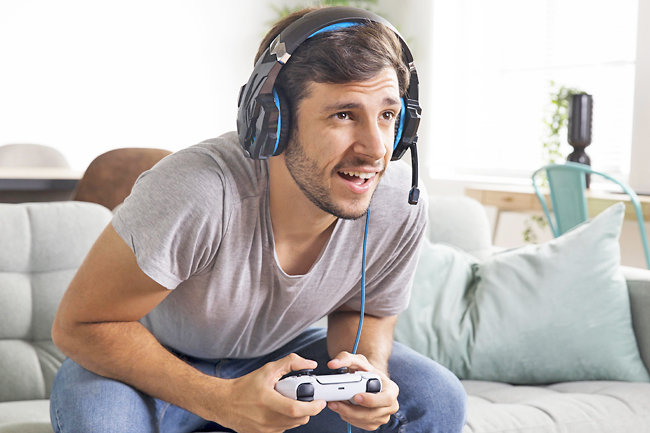ANN/THE STAR – Gamers may be at risk of hearing loss or tinnitus, according to a systematic review of evidence from studies of over 50,000 people.
The sound levels reported in the studies are often close to or above permissible safe limits, according to the international research team from the United States (US), China and World Health Organization (WHO).
They warn that video games are so popular that more public health efforts need to be done to raise awareness.
While headphones, earbuds and music venues have been recognised as sources of potentially unsafe sound levels, relatively little attention has been paid to the effects of video games, including esports, on hearing loss, the researchers said.
Gamers often play at high-intensity sound levels and for several hours at a time, they added.
And one estimate indicates that there were more than three billion gamers worldwide in 2022.


HOW LOUD THE SOUNDS
To try and build an evidence base, the researchers trawled research databases looking for relevant studies, as well as white papers, newsletters, reports and proceedings – collectively referred to as “grey literature” – published at any point in English, Spanish or Chinese.
Some 14 peer-reviewed studies from nine countries in North America, Europe, South-East Asia, Asia and Australasia, involving a total of 53,833 people, were included in the review published in the open access journal BMJ Public Health.
Eleven were cohort (epidemiological observational) studies – six of which looked at the associations between hearing and computer or video games; four focused on gaming centres or personal computer rooms, which are popular in Asia; and one focused on mobile devices.
Reported sound levels ranged from 43.2 decibels (mobile devices) up to 80-89dB (gaming centres).
The length of noise exposure varied by mode and frequency of access – from daily to once a month, for at least an hour at a time, averaging three hours per week.
One study reported that impulse sounds reached levels as high as 119dB during game play.
Impulse sounds consist of bursts lasting less than one second, with peak levels at least 15 dB higher than the background sound.
Permissible exposure limits are around 100dB for children and 130-140dB for adults.
The International Telecommunication Union (ITU), in collaboration with the WHO, describes a time-intensity trade-off, known as an exchange rate, for permissible levels and duration of exposure, the researchers explained.
For example, a permissible noise exposure level of 80dB for 40 hours a week with a 3dB exchange rate means the permissible exposure time halves with every 3dB increase in noise level: at 83dB, it’s 20 hours; at 86dB, it’s 10 hours; at 92dB, it’s 2.5 hours; and at 98dB, it’s 38 minutes.
For children, the permissible noise exposure level is defined as 75dB for 40 hours a week.
Children can therefore safely listen to an 83dB sound for around 6.5 hours, 86dB for around 3.25 hours, 92dB for 45 minutes, and 98dB for only 12 minutes a week, explain the researchers.
CLOSE TO THE MAX
Six studies reported on video gaming frequency among young people, which ranged from 20 per cent to 68 per cent.
Two South Korean studies reported a frequency of gaming centre use at around 60 per cent.
Five studies evaluated associations between gaming and self-reported hearing loss, hearing thresholds or tinnitus.
Of these, two found that school pupils’ gaming centre use was linked to increased odds of severe tinnitus and high-frequency sound hearing loss in both ears.
Another large observational study reported that video gaming was associated with increased odds of self-reported hearing loss severity.
One study reported that over 10 million people in the US may be exposed to “loud” or “very loud” sound levels from video or computer games.
Another study measured sound levels of five video games through headphones attached to the gaming console, and found that these averaged 88.5, 87.6, 85.6 and 91.2dB for four separate shooter games, and 85.6dB for a racing game.
The authors therefore concluded that the daily level of sound exposure from these video games is close to the maximum permissible levels of sound exposure.
An additional 16 peer-reviewed articles and 14 grey literature sources mention gaming as a potential source of excessive sound exposure.
One grey literature source sought to discover gamers’ preferred listening levels while wearing headphones.
The author concluded that gaming headphones can reach unsafe listening levels, “which could place some gamers at risk of sound-induced hearing loss”.
Three studies evaluated gender differences in gaming behaviours.





